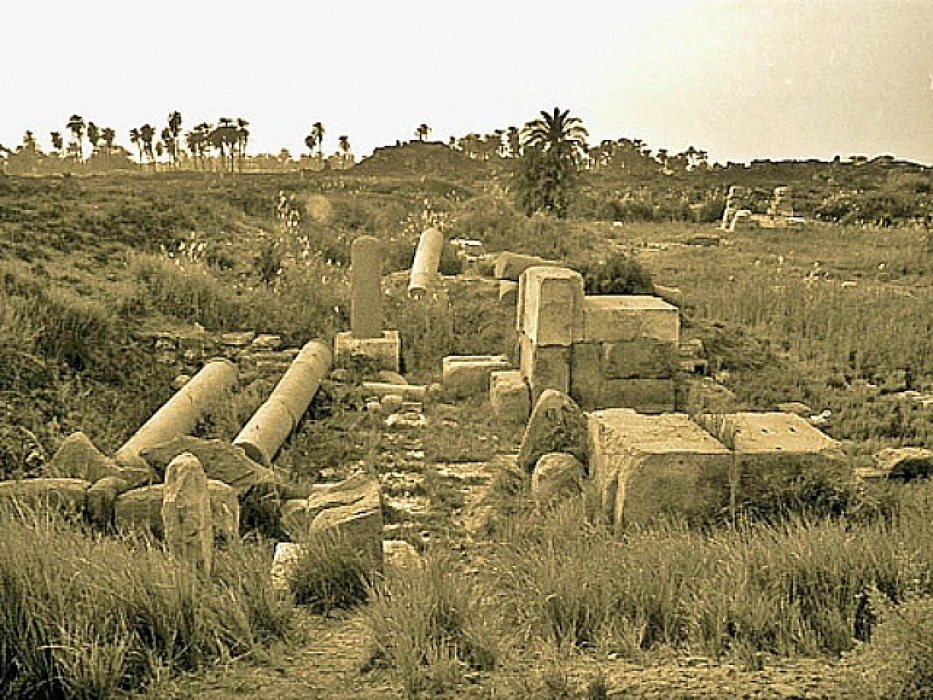
Temple of Hermopolis (El-Ashmunein)
Temple of Hermopolis (El-Ashmunein)
This ancient city, located 8 kilometres north of Malwa (near Ashmoneen), has little left to see: some remains from the Middle and New Kingdom periods, the ruins of a Roman square with a basilica dating back to the early ages of Christianity, the city was once a centre for the worship of the god Tut or Thoth, the ancient Egyptian god of wisdom.
Thoth was also the god of the moon and the god who measured time, as well as the god of magic and wisdom. He was portrayed as a man with the head of an Ibis bird, or in the shape of an Ibis, or as a baboon which has a dog-like head. His wife is the goddess of truth, justice and Daughter of Ra, and has been represented as one with ostrich feathers on her hair. The original Pharaonic name of this place was Khamunu, but Thoth, the Egyptian god of the moon and wisdom was referred by Greeks with their own god named Hermes and therefore named their city as Hermopolis. The term ‘Hermopolis’ means ‘the city of Hermes’ after the god Hermes’.
This tomb dates back to the Ptolemaic era and is both a tomb and a chapel (or small temple). Petosiris was the high priest of the god Thoth, and the tomb that bears his name has a vestibule with columns, and contains images that blend ancient Egyptian and Greek cultures, where we see scenes of agricultural work painted in the traditional Egyptian style, but the people who appear in these scenes are wearing Greek clothes.
Located 7 kilometres west of Hermopolis, Tuna al-Jabal is home to the tombs of baboons (as well as ibises and their eggs), the sacred animals of the god Thoth. Most of the mummification of these animals and birds took place during the Ptolemaic and Roman periods. In the past, Tuna al-Jabal bordered the city of Akhetaten (Akhetaten was briefly the country's capital during the reign of Akhenaten) and was also a necropolis for the neighbouring city of Hermopolis.
An area with such deep roots in Egyptian civilisation must have been bustling with activity from the earliest days of ancient Egyptian history. There is archaeological evidence of activity in the Old and Middle Kingdoms, where the ruins of a temple from the reign of King Amenemhat II were found.
In the New Kingdom, archaeological evidence became more evident, as the ruins of a temple built by King Amenhotep III for the god Djehuti were found, of which only a huge statue of Djehuti in the form of a monkey and parts of similar statues remain. The statue is the largest monkey statue ever found in Egypt.














